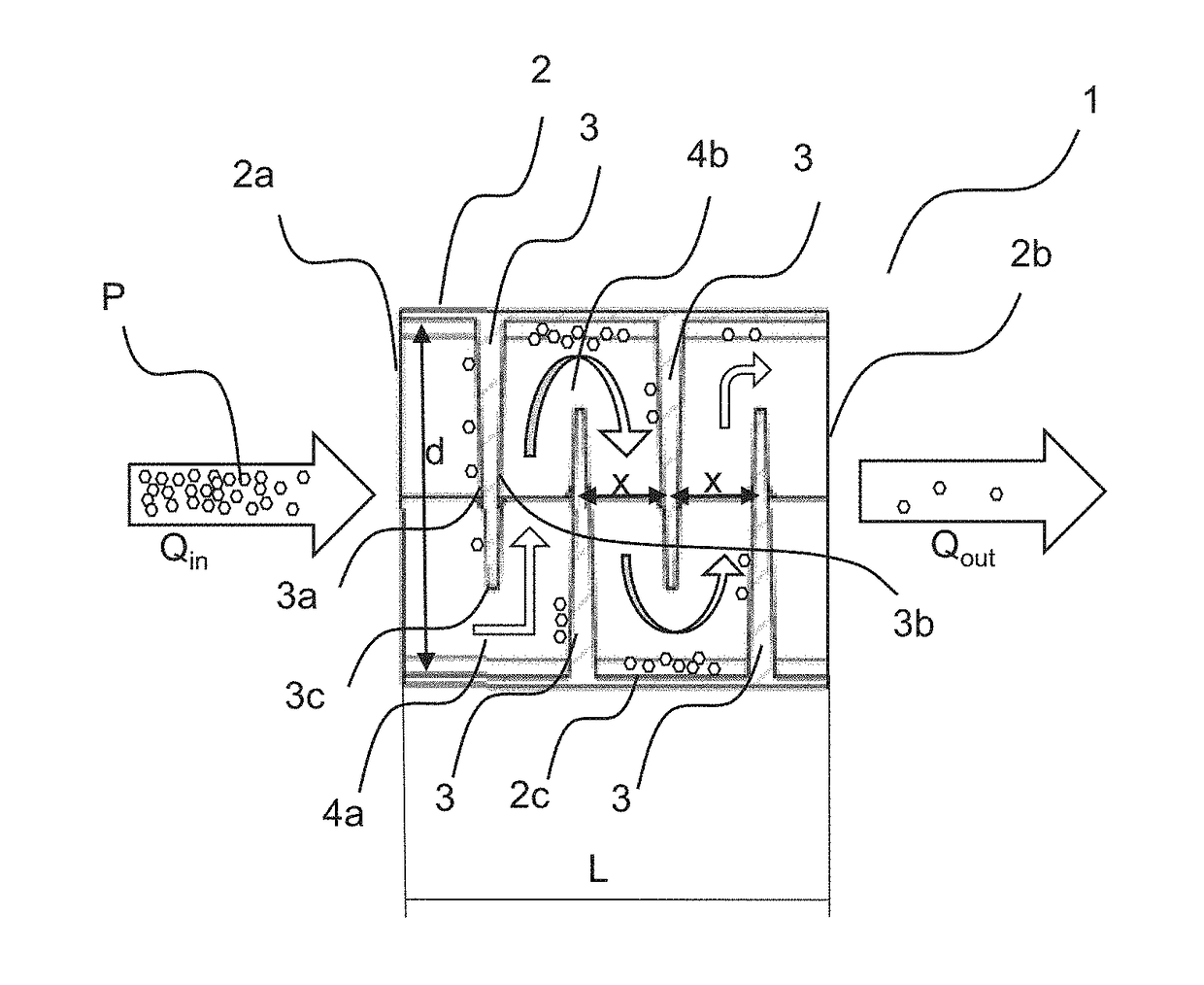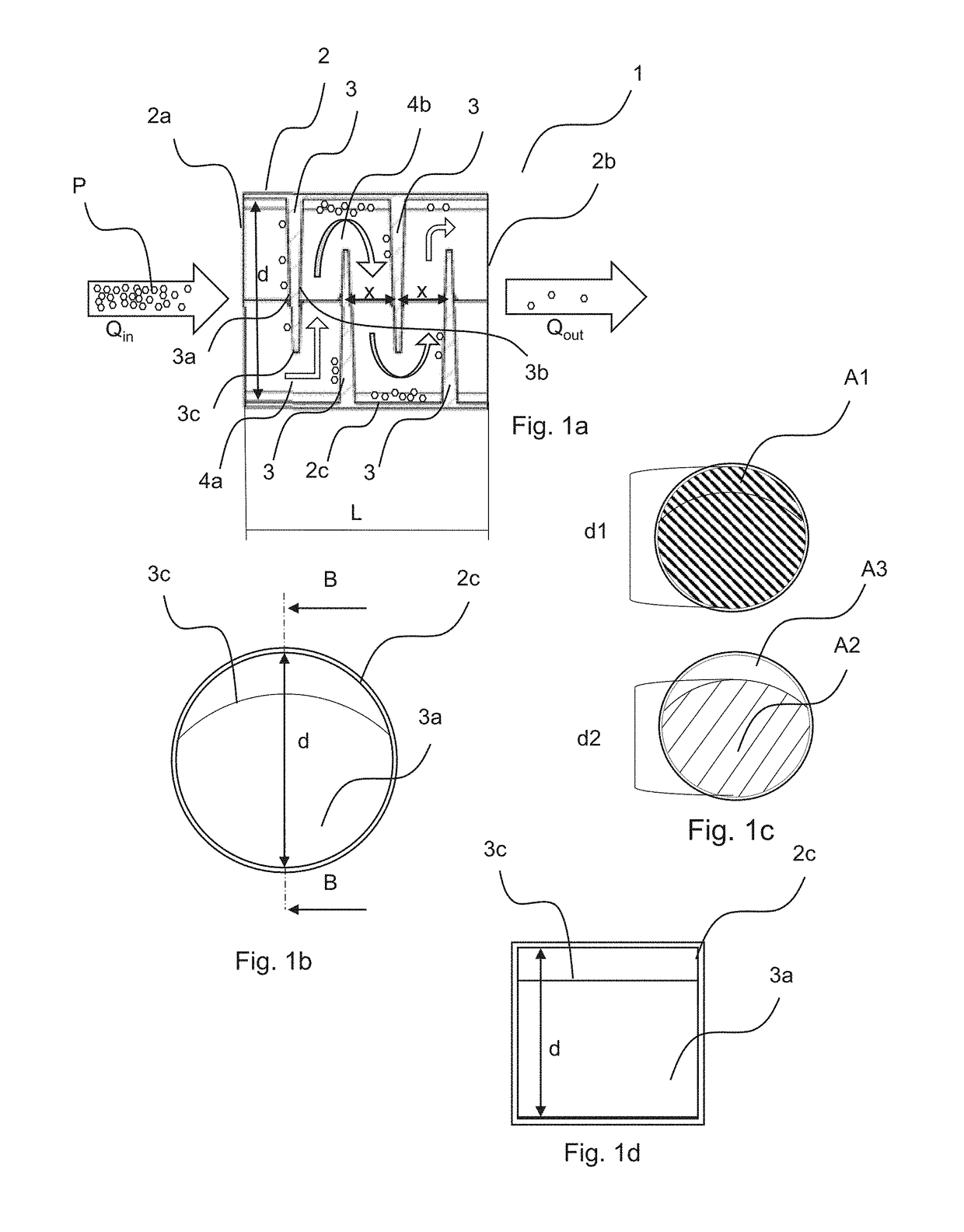Device for collecting particles in an exhaled air flow
a technology of exhaled air and aerosol, which is applied in the direction of sensors, withdrawing sample devices, diagnostics, etc., can solve the problems of complex process of extracting collected particles from a polymer filter, lack of methods and devices for easy collection of aerosol particles,
- Summary
- Abstract
- Description
- Claims
- Application Information
AI Technical Summary
Benefits of technology
Problems solved by technology
Method used
Image
Examples
Embodiment Construction
[0054]In the following, a detailed description of device according to the invention is presented. In the drawing figures, like reference numerals designate identical or corresponding elements throughout the several figures. It will be appreciated that these figures are for illustration only and are not in any way restricting the scope of the invention.
[0055]FIGS. 1a and 1b disclose an embodiment of the device 1 for collection particles in exhaled breath. FIG. 1a is a cut view taken at cut B-B in FIG. 1b and show the inside of the device 1. FIG. 1c visualizes the different cross section areas of the invention. FIG. 1d is another cut view of another embodiment of the device.
[0056]The device 1 comprises a housing 2 having an extension direction between a first end 2a with an inlet and a second end 2b with an outlet. The inlet is arranged to receive an exhaled airflow Qin comprising aerosol particles P from a subject, such as for example a person, and the outlet is arranged to transmit ...
PUM
| Property | Measurement | Unit |
|---|---|---|
| Time | aaaaa | aaaaa |
| Time | aaaaa | aaaaa |
| Fraction | aaaaa | aaaaa |
Abstract
Description
Claims
Application Information
 Login to View More
Login to View More - R&D
- Intellectual Property
- Life Sciences
- Materials
- Tech Scout
- Unparalleled Data Quality
- Higher Quality Content
- 60% Fewer Hallucinations
Browse by: Latest US Patents, China's latest patents, Technical Efficacy Thesaurus, Application Domain, Technology Topic, Popular Technical Reports.
© 2025 PatSnap. All rights reserved.Legal|Privacy policy|Modern Slavery Act Transparency Statement|Sitemap|About US| Contact US: help@patsnap.com



